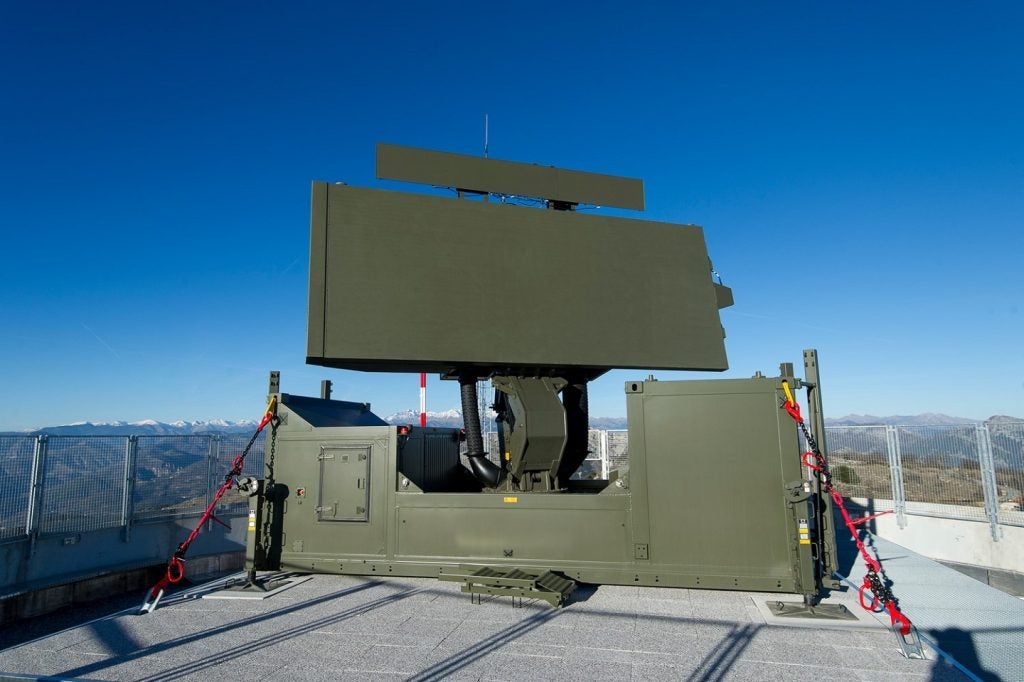
China’s 2008 defence white paper, the sixth in a series produced largely to communicate a message to the international community, describes an evolving global context and outlines a series of capability revisions throughout China’s armed forces, justifying these against a number of policies and objectives. The white paper is notable for its substantially reassuring tone, declaring from the outset an intention to "build, together with other countries, a harmonious world of enduring peace and common prosperity". But is there more to the document than met the eye two years ago?
Foreign assessments of China’s military capability and strategic ambition vary significantly. While some consider China’s ambition to be benign and its armed forces relatively weak, others believe its economic and military expansion to be of considerable potential threat to regional allies in the short term and, should growth rates be sustained, a potential future global challenge even to US hegemony. Ambiguity over China’s ambitions is potentially dangerous.
An overestimation of military capability and intent could lead to an inappropriate international defence and foreign policy reaction with the potential to initiate an escalation in tension. Some argue that simply by treating China as inevitably hostile and dangerous, it is more likely to become so. Alternatively, nations that underestimate China’s ambitions risk failing to invest sufficiently in soft and hard power measures that may be required to contain a potentially bellicose superpower.
China’s defence policy
Notwithstanding a short statement on Chinese arms control and disarmament policy in 1995, it was not until the issue of the white paper later that year that China first formally declared its military capability and intent. The steady evolution of military capability that has followed is thought in part at least to have been driven by a desire to retain sovereignty in times of increasing globalisation.
See Also:
In each of the biennial white papers that have followed, China’s tone has remained one of general reassurance and security optimism. The 2008 white paper articulates China’s view of the global security situation and articulates its assessment of threats and security challenges as well as its military and strategic intentions.
How well do you really know your competitors?
Access the most comprehensive Company Profiles on the market, powered by GlobalData. Save hours of research. Gain competitive edge.

Thank you!
Your download email will arrive shortly
Not ready to buy yet? Download a free sample
We are confident about the unique quality of our Company Profiles. However, we want you to make the most beneficial decision for your business, so we offer a free sample that you can download by submitting the below form
By GlobalDataChina gains optimism from conditions of increased globalisation, connection and economic dependence, the consequence of which it perceives as a reduction in the risk of worldwide war. The Asia-Pacific security situation is considered stable, partly due to improved cooperation, particularly due to cooperation of institutions such as the Shanghai Cooperation Organisation, the Association of Southeast Asian Nations (ASEAN) and the South Asian Association for Regional Cooperation (SAARC). China considers the situation across the Taiwan Straits to have markedly improved as a consequence of increased diplomatic efforts and common understanding.
However, a number of China’s present and potential threats are acknowledged. These include competition for strategic resources and locations, economic threats and increasing emphasis on the emergence of terrorism, environmental disasters, climate change, serious epidemics, transnational crime and piracy. The international system is seen as fluctuant, with changing strategic forces and the emerging of developing powers to the extent that a "profound readjustment is brewing in the international system". A number of factors contribute to uncertainty in Asia-Pacific security, notable amongst which are economic and political turbulence and an increase in US strategic attention to the region. Additional challenges are recognised as arising from separatists working for Taiwan, East Turkmenistan and Tibet independence.
From the outset, the white paper acknowledges China’s increasing importance as a member of the international system, establishing the requirement for its development to continue alongside that of other global players in order to maximise prosperity and stability for all. Crucially, this is to be an extension of China’s foreign policy of "peaceful development", a relatively new security concept first articulated by Zheng Bijian in 2003. The white paper repeatedly emphasises that its national defence and foreign policies are purely defensive in nature, and are accordingly aimed only at protecting its territory and people, while working with the international community to construct a peaceful, prosperous and harmonious world. The military strategy of "active defence" is explained as meaning that China will only engage after an enemy has attacked. China will accordingly "never seek hegemony or engage in military expansion now or in the future, no matter how developed it becomes".
China’s white paper separately lays importance on the deterrence of crisis and wars. The importance of regional and global bilateral and multilateral engagements is seen as critical, as is its flexible use of "different means of deterrence", which include "second use" nuclear weapons. The white paper acknowledges a general shift from the previous position of preparing for large-scale nuclear war to a new peacetime construction. Military capability must therefore evolve to a leaner and more modernised configuration that allows activity across a spectrum of interests including emergency rescue, disaster relief, construction and national development.
Capability
The white paper stresses the need for modernisation throughout China’s armed forces, achievable in part through new acquisition programmes, but more generally and importantly through a process of "informationisation", a coordinated, network-centred enhancement programme that pervades all capability areas and will prove the major performance-measuring criterion. The network-centred approach is considered vital for optimising component contributions to both offensive and defensive operations, and particularly critical to success in "local wars".
The paper further commits China to the development of new, technologically advanced equipment, using an ambitious and exponential "leapfrog development" programme. In doing so, it notes the importance of previous modernisation in allowing a significant reduction in the size of its armed forces, with the inference that further force reduction may be possible.
In addition to the acquisition of new equipment for its main services, the white paper makes provision for reform, upgrade and innovation within the national defence reserve, noting enhanced investment to allow the conduction of large-scale air defence. The pervasive lack of transparency over China’s legacy force capability, structures and serviceability makes determination of the degree to which modernisation of China’s armed forces is necessary difficult to determine.
In addition, China’s ambition to generate a technologically advanced military with the potential to streamline the size of its armed forces would be in keeping with developments within other advanced militaries over recent years. Therefore, in this respect, the capabilities described in China’s white paper may well be in keeping with its stated limited ambitions rather than an indication of an intention of regional or global expansion.
The white paper’s force projection planning, however, is profound. The army will change from its current planning for regional defence to a stance of trans-regional mobility. While the army is to increase in overall size, individual units are to become smaller and lighter with increased emphasis on aviation and the development of capabilities for long-distance manoeuvres, rapid assaults and special operations. The navy meanwhile, already consisting of three fleets, is to upgrade its equipment and improve its ability to fight in distant waters. Perhaps most significantly, the Chinese Air Force is to transition from territorial air defence to offensive and defensive operations, increasing its capabilities in reconnaissance and early warning, air strikes, air and missile defence and strategic projection. Finally, the national defence reserve is to become capable, for the first time, of providing air defence missiles and artillery. In this area therefore, China sets a clear agenda for the construction of a significant expeditionary or force projection capability. In the absence of any immediate military threat, this planning potentially undermines China’s stated policies of reassurance and limited ambition, instead reinforcing international assessments of the threat of its regional or global expansion.
Superficially, China’s 2008 white paper indicates no significant investment in new nuclear capability. Instead, the second artillery force, the country’s main nuclear weapon provider, aims to continue the status quo by providing a range of conventional and nuclear weapons under the direct command and control of the Chinese Military Command with the intention to only ever employ a "second strike" policy. However, the lack of additional nuclear investment most likely reflects the existence of a sufficient and substantial existing capability. China’s arsenal has long been configured to provide a range of deterrents through the provision of standard nuclear long-range missiles, ballistic missiles tipped with conventional rather than nuclear weapons, counter-space attack capabilities and non-kinetic means of damaging critical nodes at distance. China is known to have made provision for a number of scenarios that range from high-tech local wars, thought necessary due to its neighbours’ possession of nuclear weapons, to full-scale nuclear confrontation. In addition, China fails to take the opportunity to reduce its nuclear arsenal, despite reaffirmed commitment to arms control, disarmament and non-proliferation.
In this area therefore, the white paper establishes China’s capability and intent to operate militarily on a global scale in line with concerns raised by international actors rather than seizing the opportunity to develop its more benign overtures. The final analysis of China’s 2008 white paper centres on the range of its capabilities, making provision for a military with wide-ranging applications to complement regular war-fighting capability. In addition to the standard domestic activity routinely undertaken by the army and national defence reserve, increased effort is to be made in the areas of internal construction and development as well as domestic and international emergency rescue and disaster relief.
Acknowledging the work already performed by the PLA in supporting security for the Beijing Olympic Games, the white paper highlights the additional potential to harness military activity in support of reconstruction, infrastructure development and even the provision of domestic medical care. Whilst it could be argued that any international rescue operations or disaster relief that China undertook would constitute an attempt at influence through soft power, such practice would not comprise a significant level of regional or global ambition as described in the more threatening international assessments.
In this final area therefore, China’s white paper could be viewed as supporting its stated policies of reassurance and limited ambition.
China’s message
Significant differences exist between the reassuring and benign content of China’s defence and foreign policy and the international assessments made by a number of significant players who instead identify both regional and global threats associated with its economic and military development. Several challenges exist in interpreting China’s military intentions, amongst which are a lack of transparency of the country’s current military capability and defence expenditure as well as potential interpretation errors caused by the translation of its white paper.
The white paper fails to effectively communicate China’s message of reassurance or convincingly support more alarming analyses made by international actors. It is suggested that the international community will continue to make military and policy adjustments in order to react to China’s evolution and that subtle diplomacy may be required in order to generate an appropriate international response to the white paper rather than one that introduces the risk of any escalation in tension.
This article was first published in our sister publication Defence & Security Systems International.





